This post contains affiliate links.
This DIY Off Road Tiny Nissan Truck Camper a guest story by Bartek Felski
It started with browsing in search of inspiration from enthusiasts gathered around Bajataco (Toyota Tacoma fans) who presented on its website an interesting solution based on the basic premise – the car block is unchanged. Contrary to serious limitations as the width of container in many cases managed to ingeniously solved living space. The problem was, however, one – I have not found similar conversions on a short four-door Nissan’s chest.
In “daily” – alcove with seats in the rear of the car. Under the seats there are lockers. Above the rear axle will place extra fuel tank (length 153cm) and cupboard over it with a folding table top (when unfolded will serve as a bed). Version of “Night” is a complex table and thus occasioned bed for 2 persons with dimensions 120cm x 172cm. At the top is unfolded will also be organized bed measuring 120cm x 172cm, partly overlapping the lower bed. The height difference between them is 55cm.
Teacher Designs/Builds DIY Off Road Toyota Tacoma Camper

Images © Bartek Felski
A Teacher’s Creative Journey: Designing and Building an Off-Road Nissan Truck Camper
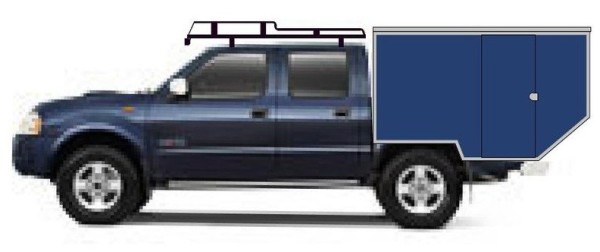
In the world of DIY camper conversions, there’s one story that stands out—an inspiring journey of a teacher who ventured beyond the classroom to design and build a remarkable off-road Nissan truck camper. Join us as we follow the teacher’s creative process, from the initial design concepts to the hands-on construction of this unique and adventurous project.

Designing the Dream:
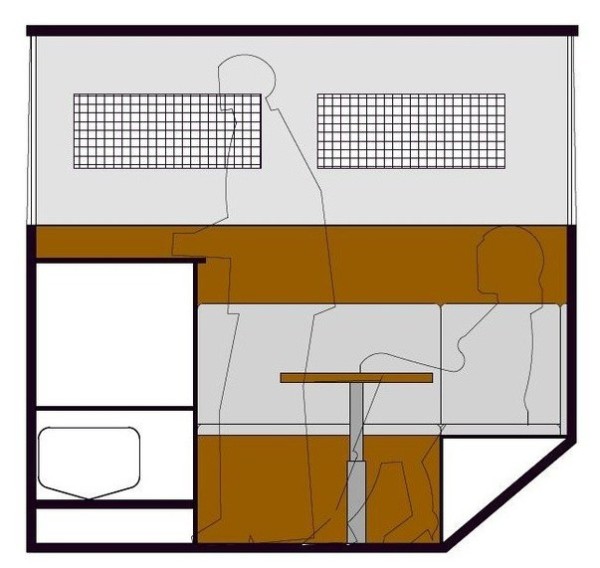
Every great adventure starts with a vision, and for this teacher, the dream was to create a versatile and off-road-ready camper from a Nissan truck. The initial design phase was filled with brainstorming sessions, sketches, and careful consideration of space utilization. The goal was to keep the car’s block unchanged while ingeniously maximizing the living space.
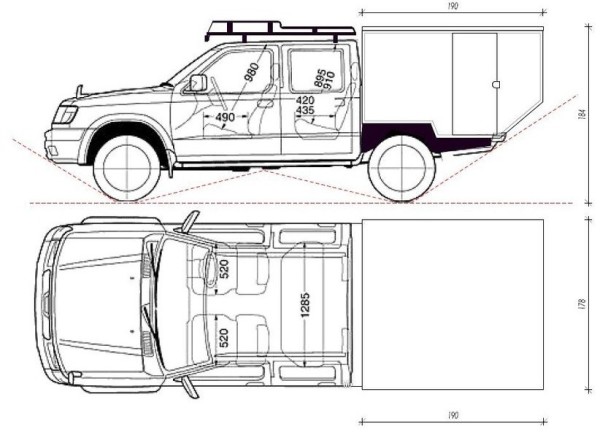
The layout included an “alcove” with seats in the rear of the car, lockers beneath the seats, an extra fuel tank above the rear axle, and a cupboard with a folding table top that would double as a bed. For nighttime accommodations, a complex table setup would convert into a cozy bed for two, and an additional bed would unfold above it. The height difference between the two beds was carefully planned to ensure comfort and functionality.

Turning Inspiration into Innovation:
The teacher drew inspiration from the community of Bajataco (Toyota Tacoma enthusiasts), who had presented a similar concept on their website. However, they faced a challenge as they couldn’t find similar conversions for a short four-door Nissan truck. Undeterred, they set out to innovate and create something truly unique.
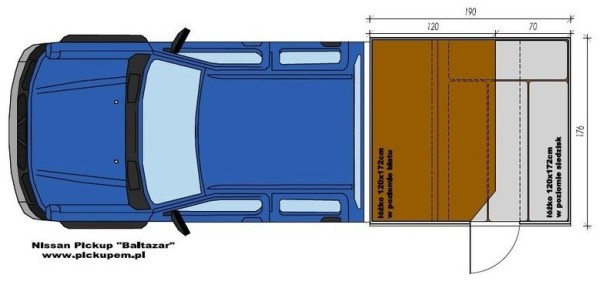
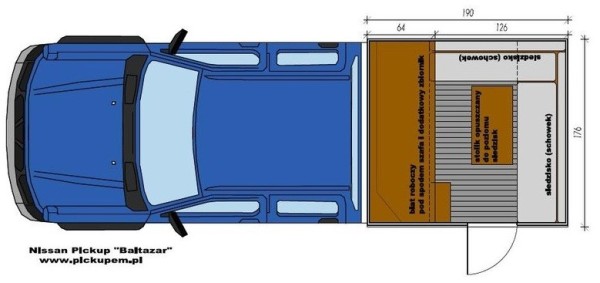
Building the Camper:
With the design in hand, the teacher embarked on the hands-on phase of the project.

This involved sourcing materials, tools, and the skilled craftsmanship needed to bring their vision to life.

The construction process was a labor of love, marked by countless hours of dedication and creativity.

The camper’s transformation included careful construction of the seating area, installation of lockers, and the integration of the extra fuel tank and cupboard.
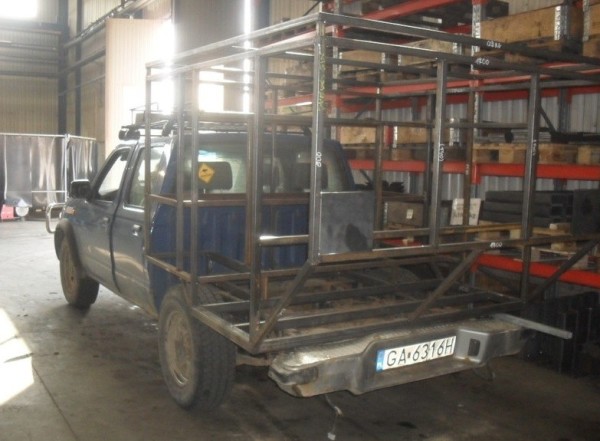
The folding table top was crafted to perfection, ensuring it could serve both as a surface for daily use and as part of the sleeping arrangement.

The end result was a camper that seamlessly combined functionality and comfort.

Hitting the Open Road:
Once the camper was completed, it was time to hit the open road and put their creation to the test.
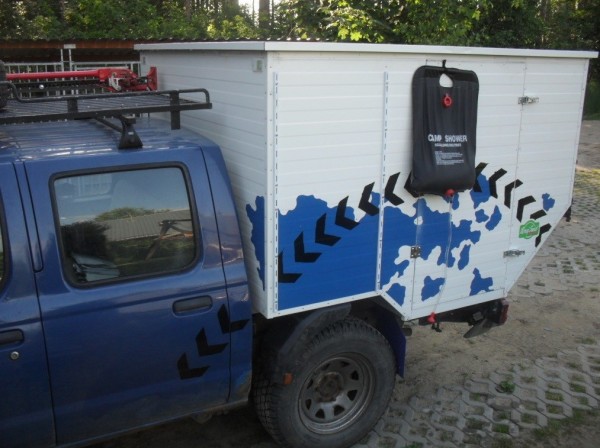
The teacher’s off-road Nissan truck camper was now ready for adventure, offering the freedom to explore new horizons, camp in remote locations, and experience the beauty of the great outdoors.
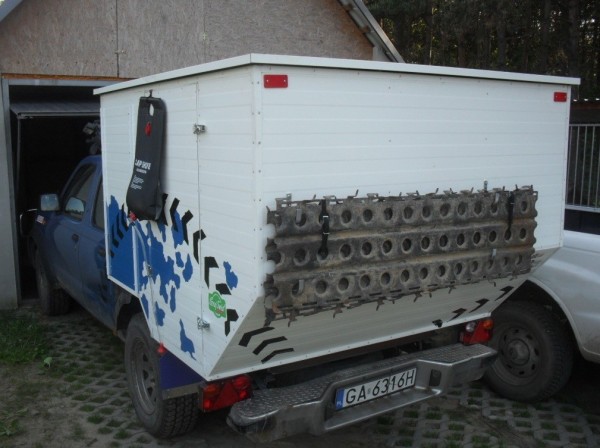
The journey of this teacher from designing a dream to building an off-road Nissan truck camper exemplifies the spirit of adventure, innovation, and the pursuit of creative passions.

It’s a reminder that with dedication and ingenuity, anyone can turn their vision into reality.

This DIY project is a testament to the teacher’s determination to break free from the ordinary and embark on a journey filled with excitement and exploration.
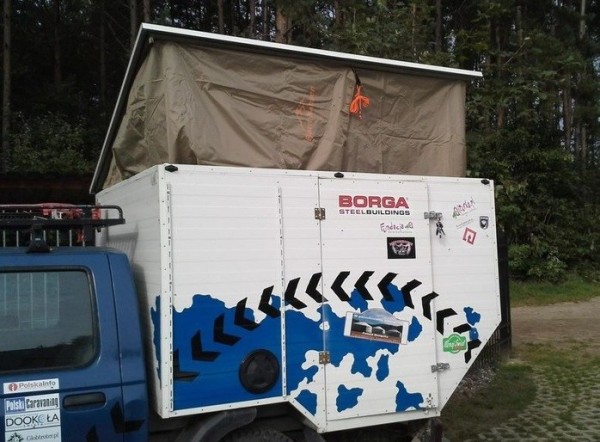
As we celebrate this achievement, we invite you to share your own DIY camper conversion stories or join us in following more inspiring adventures like this one.
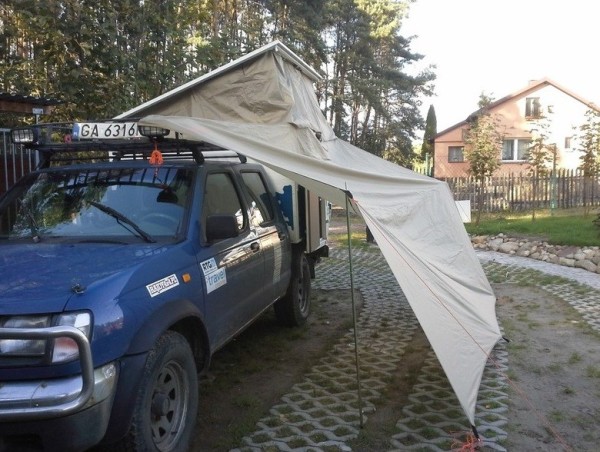
Stay tuned for more captivating tales of innovation and creativity in the world of tiny house living and DIY camper conversions.
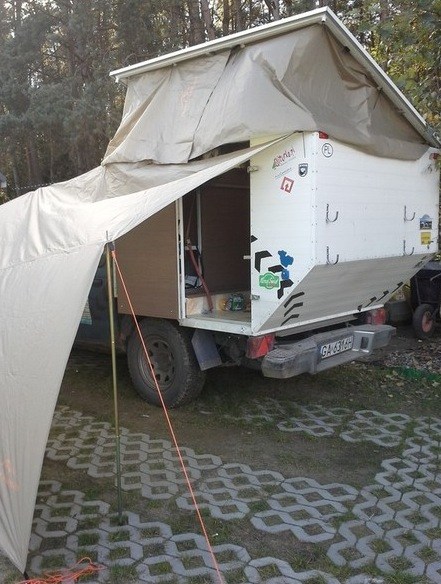
From Inspiration to Innovation: Crafting a Tiny Nissan Camper!

Ingenious Nissan Camper Conversion: A Teacher’s DIY Adventure
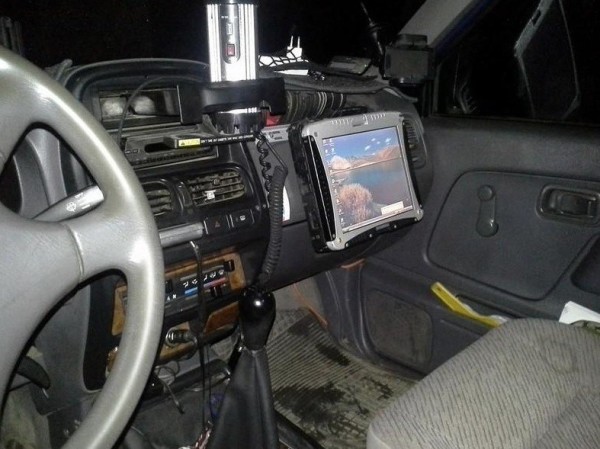
A Teacher’s Quest for Adventure: DIY Off-Road Nissan Camper

From Classroom to Camper: Teacher’s DIY Off-Road Journey
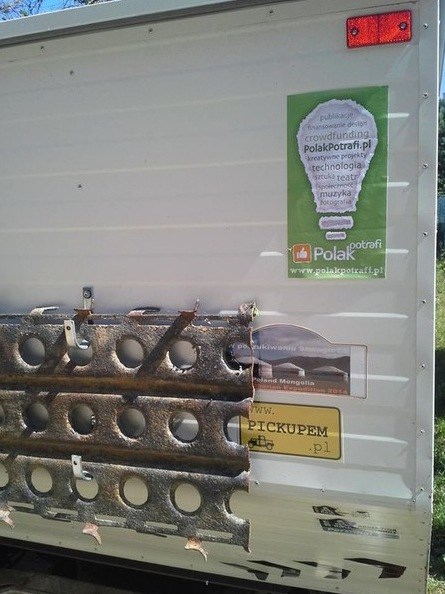
Images © Bartek Felski
You can send this tiny house story to your friends for free using the social media and e-mail share buttons below. Thanks!
If you enjoyed this tiny house story you’ll absolutely LOVE our Free Daily Tiny House Newsletter with even more! Thank you!
This post contains affiliate links.
Alex
Latest posts by Alex (see all)
- Escape eBoho eZ Plus Tiny House for $39,975 - April 9, 2024
- Shannon’s Tiny Hilltop Hideaway in Cottontown, Tennessee - April 7, 2024
- Winnebago Revel Community: A Guide to Forums and Groups - March 25, 2024




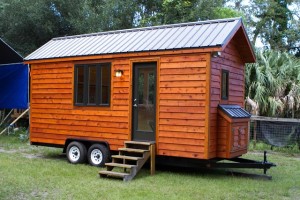

Not for me, but incredibly creative!
Nice design on the truckdesign. Not related, but i always love those pavement bricks. Paving the area doesn’t require much cement. The natural growth adds to the charm. If you ever need to renovate you can do so without heavy machinery. Perfect forwhen you find a tiny home spot to settle.
second your comment re “pavers” Joey. Seems like every piece of acreage (discarded by developers) borders on wetlands and I had forgotten about “grasscrete”. Tx Bartek
Want to bye a used tiny house in Orlando florida to put in my daughters back yard as a mother in law house. Please if you knows who is selling one let me know. Thank you.
Like the shower unit. Wonder what the new unit weighted? Needs more windows.
Not a bad idea, I would have done it on a full size pickup bed, 8 feet, and added a cab-over with a slant at the wind-shield the same as the wind-shields. Gives me some ideas on an old truck I have; 79 f-100 with an 8foot bed.
He’s in Poland. Anywhere other than North America, that is considered a ‘full size’ pickup. 🙂
Clever…fits more than one would think into the available space.
I wonder what the piece of hole-y rusted metal on the back is for, though?
Probably a ramp for the little boy. You can tell by the look in his face in the picture that he is saying… “Dad, how am I supposed to get up there?!?” 🙂
Those are traction strips to put under the tires when you get stuck. Or to keep forgetting stuck. In one of the pictures he has two strapped on there.
*from getting
They’re often called ‘sand ladders’.
That’s a Nissan, rather than a Toyota
the metal with holes in it is for traction. they build temporary landing
strips for aircraft by connecting those together
The perforated steel planking (PSP, or Marston strips) are re-purposed by expedition rigs as ‘sand ladders’. Purpose-built sand ladders are also available in plastic, but without the enviable ‘rust factor’.
I wonder if he hinged their mounts so they could double-duty as a counter or table…
B is right, that is a Nissan 4 door truck.
I like the ingenuity of this builder. Keep it up!
Now days you can buy a overhead camper extended out the back and with slide outs on both sides. Lots of room and then slide off truck when your at camp if you want to
Pretty clever and nice drawings with progress photos. But after tearing up the side of the truck prior to building the new camper shell, what is to prevent worse damage to his new camper shell? It does protrude 4-6 inches past the truck body.
As for Grasscrete Pavers – they were a good idea that did not seem to work as advertised. They were designed to provide hard “dirve-able” surfaces for parking lots where owners or cities demanded permeable parking and planted area. The driving and parking feature worked as did the drainage concept. But the grass always seemed to die and turn into a mushy ugly mess.
The Marston Strips look like the pre-fabricated invention used by the Sea-Bs during WW2 to make “instant air-strips” on jungle islands and corral atolls. They went in super fast and were relatively easy to remove and replaced if the air-field damaged by enemy bombs or artillery fire. Maybe the Soviets left behind mountains of these strips after they pulled out of Poland.